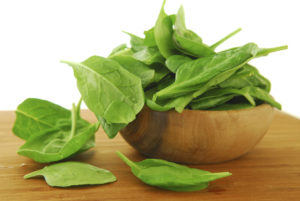Too Much Or Too Little Iron In Food?
Iron in food is an essential mineral responsible for many functions in the human body. From sustaining healthy skin, hair and nails, as well as working to produce adenosine triphosphate (ATP; the body’s main energy source), iron is one mineral we can’t live without.
It may be the fact that it’s the main carrier of oxygen throughout the human body that makes it most essential. But too much or too little can wreak havoc on your health.
What Do You Know About Iron In Food?
Hemoglobin is a substance found in red blood cells and is responsible for carrying oxygen from the lungs and transporting it throughout the body. Hemoglobin mainly consists of nearly two-thirds of iron found in the human body.
If you’re lacking in iron, then your body won’t be able to make enough healthy oxygen-carrying red blood cells. And without enough healthy red blood cells, your body won’t get the oxygen it needs.
Iron Deficiency Anemia

This is known as iron deficiency anemia. Based on statistics presented by The World Health Organization, iron deficiency is the leading nutritional disorder worldwide, while The National Institutes of Health states that, “as many as 80% of the world’s population may be iron deficient, while 30% may have iron deficiency anemia.”
Paul Thomas, EdD, RD, a scientific consultant to the National Institutes of Health, Office of Dietary Supplements, says,“If you’re not getting sufficient oxygen in the body, you’re going to become fatigued. That exhaustion can affect everything from your brain function to your immune system’s ability to fight off infections”.
If you’re anemic, you may have the following symptoms:
- shortness of breath
- pale skin
- difficulty concentrating
- have cold hands and feet
- have sores in the corner of your mouth
- dizziness
- hair loss
- brittle nails
- fast heartbeat
- muscle fatigue
- sore tongue
- difficulty swallowing
- a weakened immune system
Iron In Food
Iron can be found in a variety of foods, some meat-based (known as heme), while others are plant-based (nonheme). Here are some examples:
Nonheme:
- found in plant-based foods, such as beans and lentils
- oatmeal
- soybean
- spinach
- iron-fortified cereals
Heme:
- red meats
- poultry
- fish
- liver
- oysters
- tuna
- turkey
The Absorption Of Iron In Food
The absorption of iron in food can be affected by several factors. The problem lies not in what you eat, but in how well your body absorbs nutrients, and iron can be tricky. Even though most foods contain nonheme iron, it’s heme iron that gets absorbed easier in the body. Additionally, most healthy adults absorb about 10 – 15% of the iron they ingest.
Those at most risk of iron deficiency are:
- Athletes who train frequently and at high intensity.
- Those who suffer from renal failure
- People with gastrointestinal disorders who can’t absorb iron efficiently
- Pregnant women
- Women with heavy menstrual cycles
How To Boost Your Body’s Absorption of Iron
- Eat foods that contain high levels of Vitamin C (as strawberries, oranges, broccoli, peppers) with iron-rich foods
- Combine 2 iron-rich foods together, such as beans and ground beef
- Cook food in stainless steel pots or cast iron skillets
- Iron supplements. Speak with your doctor about which supplement best meets your needs because iron supplements can cause various side effects, as nausea, diarrhea or constipation, and dark stools.
On the other hand, if most of your foods contain nonheme iron, it’s better to decrease your intake of drinks that contain tannin, such as coffee, tea and wine, because they further decrease the absorption of iron.
The Daily Recommended Allowance
- Men, 19-years old and over: 8mg/day
- Women, 18 – 51 years old: 18 mg/day
- Pregnant women: 27 mg/day
- Breastfeeding women: 10 mg/day
- Women, over the age of 51: 8 mg/day
An interesting fact about iron is that infants are born with a 6-month supply which means they require less amounts than adults. As we grow and develop, the lifestyle choices we make concerning food affect how our body absorbs and benefits from iron. But the importance of this mineral cannot be stressed enough, mainly because lack of it causes a slew of serious health problems.
15 Foods To Eat Before & After Your Workouts
Take a good look at your diet, see which foods you’d like to add more of or do without all together. Another good tip is to make sure your food combinations enhance the absorption of iron, rather than diminish it. Your body needs a certain kind of nutrition in each stage of an exercise workout.
In this free report, 15 Foods To Eat Before & After Your Workouts, you’ll discover what to eat both before and after a workout and why those types of foods are best at both ends of an exercise session.


Pingback: How Is Exercise Good For Mental Health? - How To Get Flat Abs Fast
Pingback: Top 7 Vitamins & Supplements That Boost Your Energy Level
Pingback: What Are The Best Foods For A Healthy Lifestyle?
Pingback: What's The Difference Between Strength Training and Muscle Building?
Pingback: 5 Easy Ways To Begin Eating Healthy - How To Get Flat Abs Fast
Pingback: How To Get Enough Nutrients From Your Whole Food Plant-Based Diet
Pingback: 5 Healthy Foods You Should Eat Every Day - How To Get Flat Abs Fast